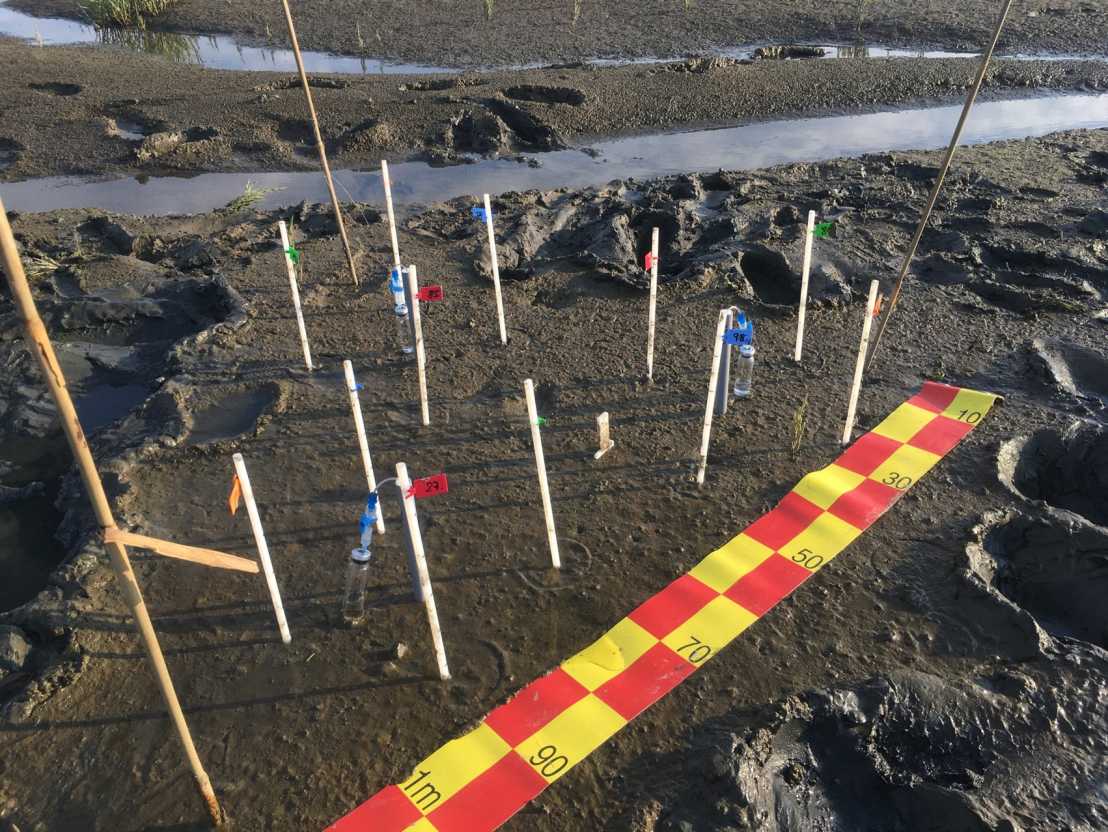New study reveals the transformation of vivianite in intertidal sediments with contrasting sulfide conditions
A new study published in Geochimica Cosmochimica Acta explores how vivianite transformation occurs in intertidal sediments in the presence and absence of sulfide and calcium carbonate. The outcomes are important to understand the dynamics of P in sediments following sea level rise.

Vivianite, a ferrous phosphate mineral, can be a significant phosphorus (P) burial phase in non-sulfidic, reducing coastal sediments. Expected sea level rise may increase sulfide production in currently non-sulfidic sediments containing vivianite, leading to conditions under which vivianite is thermodynamically unstable. Here, we compared the mineral transformation processes of two different vivianites: unsubstituted vivianite and a vivianite substituted with Mn and Mg (Mn/Mg/Fe=0.30/0.14/0.56), two cations that frequently substitute for Fe in the crystal structure of vivianite. Further, we investigated the potential role of calcium carbonate as a sorption site for phosphate, which is released during vivianite dissolution. The vivianites were mixed with sea sand (quartz) and with or without calcium carbonate. The mixes were filled in mesh bags and installed at 15 to 20 cm sediment depth at two adjacent field plots with contrasting dissolved sulfide concentrations in an intertidal flat in the Wadden Sea. The low sulfide plot had sulfide concentrations ≤50 μM, while concentrations at the high sulfide plot ranged from 0.6 to 6.7 mM. Porewater chemistry was regularly monitored during the field experiment. After 56 days of field incubation, the reacted solid phase was assessed by acid digestion for total elemental composition and Fe, P, and S speciation by X-ray absorption spectroscopy. Both vivianites with and without calcium carbonate and at both field plots dissolved partially, resulting in a net loss of Fe, Mn, Mg, and P from the mesh bags (elemental losses ranged from ∼ 10 to 35%), while solid-phase S accumulated, particularly at the high sulfide plot. Green rust minerals were the major transformation product at the low sulfide plot to which some released phosphate could likely readsorb. Mackinawite formation, which dominated at the high sulfide plot, is less efficient at adsorbing P and thus resulted in an enhanced P loss from the mesh bags. On average, there was ∼ 27% P loss at the high sulfide plot, compared to ∼ 20% at the low sulfide plot. Mn-Mg-substituted vivianite dissolved more at both field plots, likely due to changes in mineral reactivity due to isomorphic substitution. The presence of calcium carbonate slightly lowered P loss, suggesting that its presence may positively impact P retention during vivianite transformation. Overall, P availability was enhanced under euxinic conditions, indicating that vivianite-containing sediments may become sources of bioavailable P under changing environmental conditions.
Kubeneck, L. J., Notini, L., Rothwell, K. A., Fantappiè, G., Huthwelker, T., ThomasArrigo, L. K., Kretzschmar, R. (2024) Transformation of vivianite in intertidal sediments with contrasting sulfide conditions. Geochim. Cosmochim. Acta.
The external pagefull text is available online.
